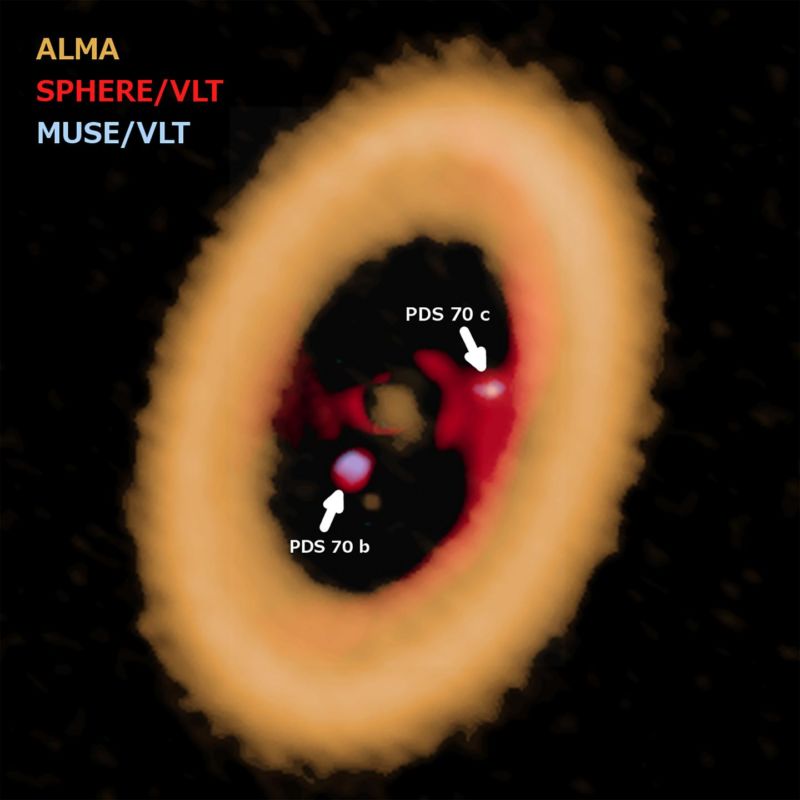No exomoons yet, but we may have spotted a disk that will form them

Enlarge / There's a lot going on near a young star, with at least two planets forming around it.
Up until the last few decades, our picture of what might reside around distant stars was shaped entirely by the planets, moons, asteroids, and other bodies in our own Solar System. But the discovery of thousands of exoplanets has dramatically improved our picture of what's out there in terms of large bodies. Comets and asteroids, by contrast, are well below our ability to image for the indefinite future.
Moons, however, are awkwardly in between. It should be possible to image them indirectly, as their gravitational influence will alter the timing with which their planets orbit the star. And we might get a more direct indication of their presence as they will sometimes add to the shadow cast as transiting planets pass in front of their host star. We've searched for these effects, but they'll be subtle, so it could be that it will take years of observations for them to rise above the noise.
But now scientists are suggesting that we've observed an exomoon in the making. By looking at some planets forming around a young star, they think they've spotted a disk around one of the planets that may ultimately condense into moons. And, as a bonus, they found an odd, diffuse structure around a second planet that they can't explain.
Read 10 remaining paragraphs | Comments